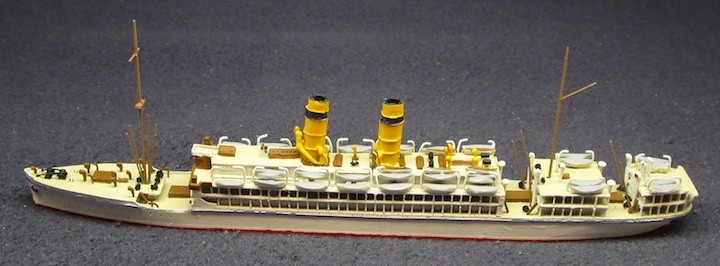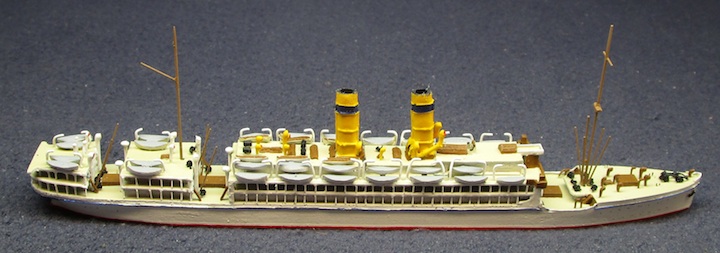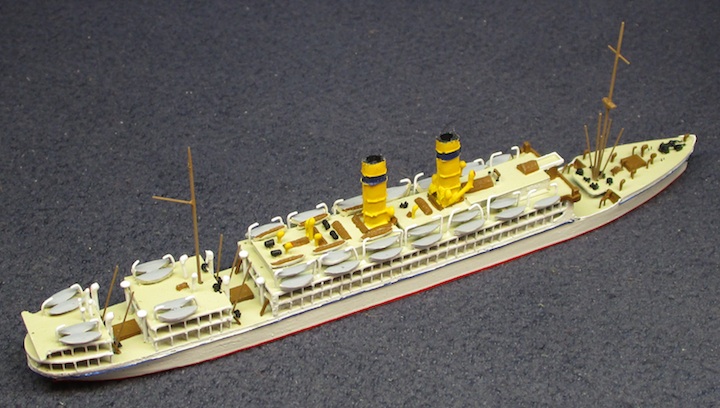Gelria

1920
(Welt der Schiffsmodel WDS-13c)
- Type: Passenger
- Displacement: 13,868 tons
- Dimensions: 560 x 65.6 x 29 ft.
- Machinery: Steam quadruple expansion, twin screw, 12,000 ihp = 17.5 knots
- Passengers: 1520 (250 first class, 230 secnd class, 140 third class, 900 steerage)
- Crew: 330
- Builder: Stephen, Glasgow, Scotland, 1913
- Service: Gelria was built for Koninklijke Hollandsche Lloyd (Royal Holland Lloyd). Maiden voyage 5 Nov 1913 Amsterdam-La Plata ports. Laid up 1916 after torpedoing of sister Tubantia during WW1. First postwar voyage 12 Mar 1919 Amsterdam-La Plata. Passenger accommodation later reduced to 1287 (no steerage); converted to oil firing 1920. Laid up 1931 due to world depression. Chartered to Argentinean government 1933, but plans for use as exhibition ship not realized and laid up again 1934. Sold to Italian government 1935 and renamed Gradisca to be managed by Lloyd Triestino. Served as troop transport and occasional hospital ship during Abyssinian War. Continued trips to East Africa until WW2, when she became hospital ship again in 1940. After Italian capitulation she was taken over 1943 by the German Navy for continued use as hospital ship. On a voyage from Salonika to Trieste with wounded, she was stopped by a British submarine, despite being authenticated, and ordered to Alexandria where 1,000 lightly wounded were disembarked. After lengthy diplomatic exchanges, she was returned to Germany in Jan 1945, but did not reenter service. Postwar became a British war prize, but on 23 Jan 1946 while on a voyage from Port Said to Malta she ran aground on the island of Gardos. Salvaged 1947 but laid up in Venice; broken up 1950.



 Up
Up





 Up
Up